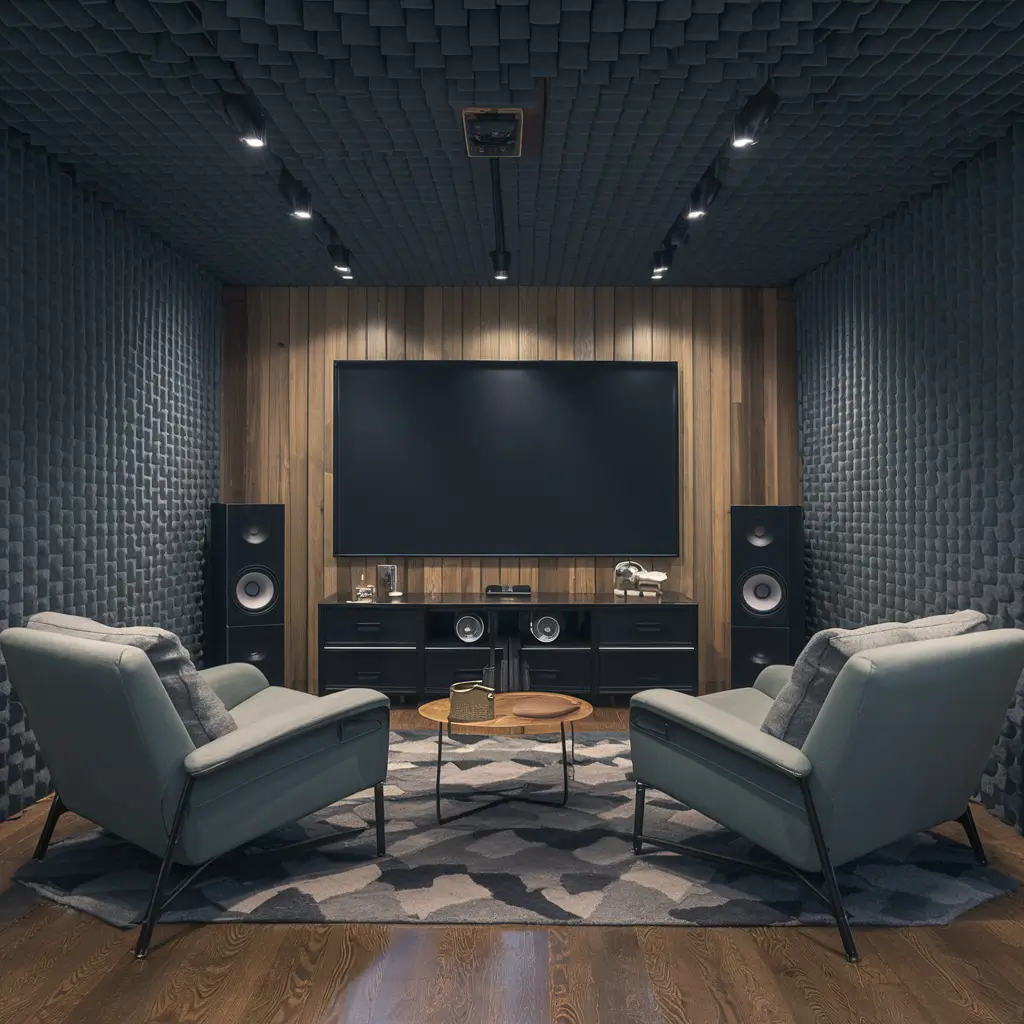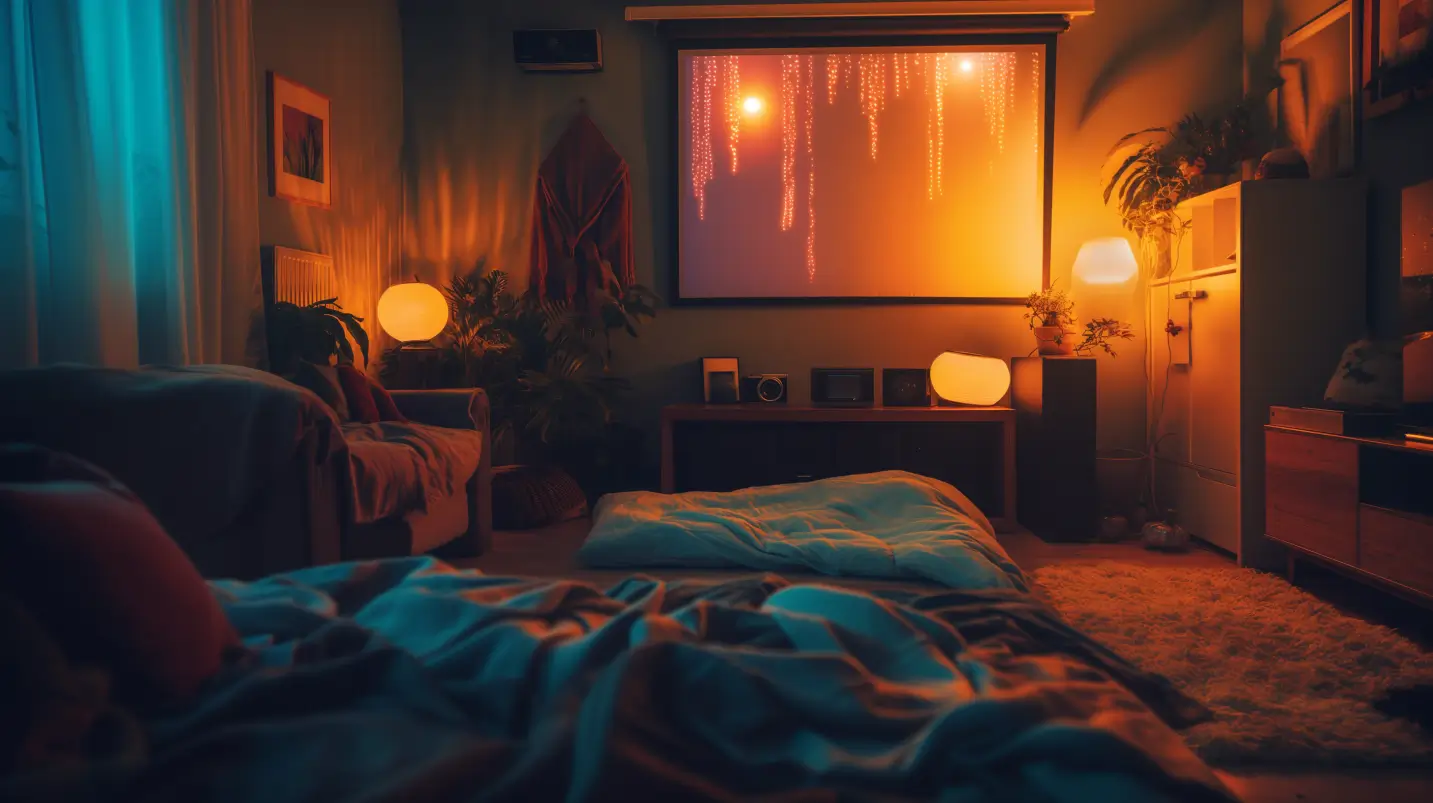5 Secrets to Mastering Home Theater Acoustics (Even for Beginners!)
· Luke · gear insights · 9 min read

Okay, imagine this: you’ve got the fancy projector, the booming sound system, the couch so comfy you could live on it… But the movies still sound kinda… “meh.”
Dialogue gets lost, action scenes lack oomph, and the epic soundtrack falls flat.
Ugh, frustrating, right?
Here’s the thing most people miss: the secret to that heart-pounding, I’m-IN-the-movie sound isn’t always about the gear. It’s about mastering acoustics.
Yeah, I know it sounds techy, but trust me, it’s mostly simple stuff that makes a massive difference.
In this guide, I’m revealing the 5 secrets to transforming your home theater into a cinematic haven. We’re talking crystal-clear dialogue, earth-shaking bass, and sound so realistic you’ll duck when the spaceship flies by.
Best part? You don’t need an audio engineering degree to understand it.
Optimizing your home theater’s acoustics is the best way to level up your movie experience – even if your setup isn’t super expensive.
Quick Takeaways
- Great acoustics make even basic gear sound amazing.
- Tiny tweaks to speaker placement can work wonders.
- Don’t let your bare walls ruin the soundtrack. (Acoustic treatments are easier than you think)
- You can achieve movie-theater-quality sound without breaking the bank.
Secret #1: Your Room is Secretly Sabotaging Your Epic Sound (Here’s How to Fix It)
Okay, let’s be honest: you could have the most expensive speakers on the planet, but if your room’s acoustics are a dumpster fire, you’re wasting your money.
Your room plays a HUGE role in how your home theater sounds. Let’s break down the basics in a way that actually makes sense:
- Room Shape Matters (But Don’t Panic): Ideally, you want to avoid perfectly square rooms for the best sound (think rectangular, or even interesting L-shapes). Now, I know you’re not about to tear down walls, but understanding how room shape affects the way sound waves bounce around is key.
- MYTH: Only rectangular rooms can sound good.
FACT: While rectangular rooms are often easiest to work with, don’t despair if you’ve got an odd-shaped space! Angled walls can sometimes help diffuse sound, reducing harsh echoes. Understanding your room’s unique shape is still key to great sound.
- MYTH: Only rectangular rooms can sound good.
- Speaker Placement: Where You Put Them Isn’t as Simple as You Think: Obviously, where you position your speakers matters, but there’s a whole art to finding that sweet spot. We’ll cover the basics of getting the best sound and some insider tricks for squeezing the most amazing sound out of your setup.
- Pro Tip: Ever hear about the 30-degree angle? It’s a good starting point for awesome sound. Imagine a triangle with you at the tip and your left/right speakers at the base corners. Each angle of that triangle should be around 30 degrees for the most immersive soundstage.
- Sound Waves Made Super Simple (No Physics Degree Required): We’re not gonna get into complex science – let’s focus on the stuff that actually matters: where sound bounces, why some spots in your room have killer bass while others sound totally dead, and how to troubleshoot those issues.
Product Recommendation: A simple laser measure will be your new best friend for finding speaker sweet spots and mapping out your room dimensions. A must-have tool!
Secret #2: Don’t Let Your Walls Ruin the Movie (Taming the Echoes)
Think of your bare walls as the mortal enemy of epic movie sound. Ever been in a huge empty room where everything echoes and sounds like a jumbled mess? Yeah, that’s not exactly the vibe we want for movie night.
Acoustic treatments are your secret weapon. Let’s cut through the confusion so you understand your options:
- Diffusers vs. Absorbers: The Sound Scattering Showdown:
- Diffusers: Think of them like tiny ninjas breaking up sound waves to make your space feel bigger and more open. These are awesome for making a small room feel less “boxy.”
- Absorbers: These are the sponges that soak up the sound and get rid of nasty echoes and muddiness. You’ll likely need some of these for sure!
- DIY to the Rescue (Or When to Let the Pros Handle It): If you’re handy (or even just a little adventurous), you can build fantastic acoustic panels that will save you serious cash. Don’t worry, I’ll share easy-to-follow guides and spill my sources for the best materials. Of course, if DIY makes you break out in hives, there are good pre-made options.
- Hiding in Plain Sight: Acoustic Solutions That Don’t Scream “Recording Studio”: Let’s be real, no one wants a room full of ugly foam pyramids. Thankfully, there are ways to blend acoustic treatments with your decor (or even make them super-stylish). Think acoustic panels disguised as cool artwork!
Q: Where do I even start with these acoustic panel things?
A: Focus on primary reflection points – the side walls, the ceiling above your listening position, and the wall behind you. Even a few well-placed panels can make a big difference.
Q: How much are these gonna cost me?
A: Acoustic treatment can be surprisingly affordable, especially if you go the DIY route! We’ll share budget-friendly solutions and pro-level tips.
Secret #3: Unlock the Perfect Soundstage with Simple Room Setup Hacks
Okay, we’ve covered acoustic basics and treatments, but now let’s dial in your room to create that “you are there” feeling in your home theater. It boils down to a few key things:
- The Ideal Setup (And How to Get Close Even When Your Room Isn’t Perfect): Let’s talk about that magical equilateral triangle setup between you and your left/right speakers and why getting as close as possible matters for the best sound. Don’t panic if your room isn’t textbook; there are ways to compensate!
- Seating Sweet Spot: The “Just Right” Position for Maximum Movie Awesomeness: Finding the perfect listening position isn’t just about being centered; it also involves the distance from your speakers, that pesky back wall, and how they impact your sound.
- Furniture Foes: The Hidden Sound Saboteurs: From sneaky coffee tables to giant, super-comfy sofas, your furniture can mess with your sound more than you think. We’ll discuss placement and how to fix those pesky acoustic problems they might be secretly causing.
- Speaker Isolation: Tiny Tweak, Big Difference: Decoupling your speakers from the floor and stands can dramatically improve bass clarity and overall detail. I’ll share some affordable DIY solutions and the best speaker isolation products around.
- Advanced Techniques: Toe-In, Tilt, and Beyond (Optional but Awesome): Sometimes a tiny speaker adjustment or two can be the difference between “good enough” sound and the mind-blowing kind that puts you right in the middle of the movie.
- The Subwoofer Challenge: When Placement Trumps Power: Honestly, this could be a whole separate guide. Subwoofer placement is notoriously tricky. We’ll go beyond the “subwoofer crawl” and discuss techniques for getting even, powerful bass throughout your entire seating area – not just your throne.
Pro Tips:
Subwoofer Sweet Spot (Beyond the Crawl):
The “subwoofer crawl” is a good start, but for truly killer bass everywhere you sit, try this: If you can manage it, TWO smaller subwoofers placed strategically around the room often beats a single, super-powerful one. Why? It leads to smoother, more even bass throughout your space.
Furniture Fix:
Big leather couch sucking the life out of your sound? Try strategically placed throw pillows or blankets to break up that sound-absorbent surface. Got a glass coffee table? A rug underneath can dampen harsh reflections.
Fun fact: a friend of mine once fixed a weird sound imbalance by simply repositioning a bookshelf that was throwing off the acoustics. Sometimes, it’s the little things that make a surprising difference!
Secret #4: Choosing Your Acoustic Weapons: A Guide to Walls, Floors, and Ceilings
Okay, now that you understand that acoustic treatments work, it’s time to choose your arsenal. Remember, the right materials will make or break the sound of your home theater. Here’s a no-nonsense breakdown:
- Batt Insulation: The Workhorse of DIY Panels: We’re talking about the pink fluffy stuff, but there’s also denser, rigid fiberglass and even recycled denim options. I’ll cover the different types, where to buy them, and how thick your treatment panels need to be.
- Acoustic Fabric: It’s Not Just About Looks: Don’t just buy any fabric to cover your acoustic panels. The type of material you choose can affect how well your panel actually works! We’ll discuss breathability, density, and how the right fabric enhances the effectiveness of your absorbers. Plus, I’ll give you ideas for finding cool fabrics for a unique look that matches your style!
- Bass Traps: Taming the Low-End Beast: Controlling those booming, muddy bass frequencies requires a different strategy. We’ll cover different types of bass traps, their ideal placement, and why those cheap foam squares ain’t gonna cut it for epic movie bass.
- Ceiling Clouds: The Forgotten Hero: Your ceiling matters! Reflections off the ceiling can mess with your soundstage. We’ll talk about strategic placement of ceiling clouds and how they can make a surprisingly big difference.
- Flooring Considerations: When Carpet Isn’t Always Your Friend: Flooring plays a role too! We’ll touch on the pros and cons of carpet vs. hardwood floors and how to manage overly reflective surfaces with strategic rugs and underlayments.
Safety first! When choosing fabric for your acoustic panels, consider flame-retardant options for extra peace of mind.
Expert Tip: Acoustic treatment isn’t a one-size-fits-all deal. Every room is different. Before buying anything, get familiar with basic acoustic measurement tools – even simple phone apps can help pinpoint your room’s problem areas, leading to smarter purchases!
Alright, I know that was a lot to take in! But here’s the thing: mastering acoustics offers the best “bang for your buck” when it comes to transforming your home theater, whether you consider yourself an audiophile or just someone who loves movie nights. Let’s recap:
- Your Room is the Key: Don’t blame your gear if the sound is lacking; look at your room first.
- Placement Matters: Simple tweaks to speaker and seating positions can make a world of difference.
- Acoustic Treatments Are Your Friend: Don’t fear them, embrace them! They’ll banish boxy sound, echoes, and bring your favorite soundtracks to life.
- It Doesn’t Have to Break the Bank: Great sound is achievable even on a budget, and there’s something satisfying about the DIY approach.
Secret #5: The Journey to Perfect Sound is Fun (and Never Ends)
Ready to experience the magic of great acoustics? Put on your favorite action-packed movie or a piece of music you really know well. Close your eyes and just listen critically. Notice the things you didn’t before – subtle details, the room rumble, the “you are there” feeling. Now, imagine how much better those details could be!
Remember, optimizing your home theater is a journey, not a destination. It’s about experimenting, learning, and evolving your setup along the way. Start with a few of the tips we covered in this guide, and I bet you’ll get hooked on the quest for truly magical sound. And hey, if you need a friendly audio geek consultant along the way, consider me your go-to guide!


